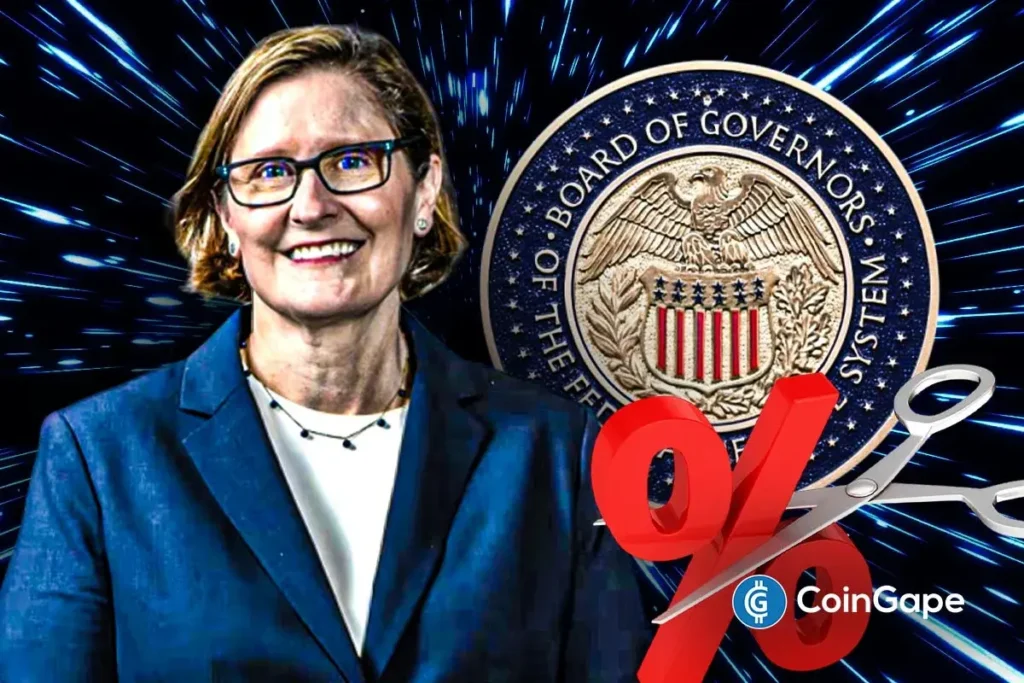Fed Outlook: Anna Paulson Advocates for Rate Cuts Amid Evolving Economy
In the world of finance, the insights of influential figures can shape market expectations and economic trajectories. Recently, Anna Paulson, the President of the Federal Reserve Bank of Philadelphia, articulated her views on the current economic landscape and the critical need for further Federal Reserve (Fed) rate cuts. Joining the chorus of Fed officials advocating for monetary easing, she underlined the necessity of addressing the increasingly precarious labor market and provided assurances regarding the transient nature of Trump-era tariffs’ effects on inflation.
The Call for Rate Cuts
Speaking at the National Association for Business Economics Annual Meeting, Paulson expressed her support for easing monetary policy, aligning with the median path outlined in the Summary of Economic Projections. Emphasizing her endorsement of the Federal Open Market Committee’s (FOMC) 25 basis points (bps) rate cut in September, she reiterated that such moves would help navigate the complexities of the current economic environment. With market participants signaling expectations for another rate cut this month, there’s palpable optimism driving bullish momentum, particularly in cryptocurrency markets.
Aligning with FOMC Perspectives
Paulson’s comments echo those of several other Fed officials, including Governor Chris Waller and Stephen Miran, who have indicated the necessity for additional cuts due to weakening labor market signals. As the economic landscape shifts, the consensus appears to be veering towards implementing two more 25-bps cuts within the year. Market watchers are keenly awaiting the outcomes of the October 29 FOMC meeting, anticipating that the easing measures will buoy economic activity and stabilize labor conditions.
Insights on Inflation and Tariffs
In addressing the inflationary backdrop, Paulson offered insights into the impact of Trump tariffs on price levels. While she acknowledged that the tariffs could marginally increase prices, she believes they will not fundamentally alter long-term inflation expectations. This nuanced view suggests that the Fed’s monetary policy should remain adaptable to fluctuations induced by tariffs, dismissing immediate tariff-induced price hikes as lasting threats to inflation stability.
Mitigating Economic Risks
Despite the concerns surrounding tariffs and their potential impact on prices, Paulson remained optimistic that current conditions would not lead to problematic spillovers into broader inflation. Her assessment reflects a more extensive concern regarding labor market vulnerabilities, which could impede economic growth. The fluctuating job market risks, coupled with inflationary pressures, necessitate measured and proactive monetary responses from the Fed.
Upcoming Insights from Jerome Powell
Looking ahead, Fed Chair Jerome Powell is scheduled to speak about the economic outlook and monetary policy. Stakeholders are eagerly anticipating his insights on the Fed’s dual mandate: managing inflation and sustaining a healthy labor market. Powell’s forthcoming remarks are expected to provide clarity on the committee’s position and future policy directions as they navigate the challenges posed by inflation and labor market dynamics.
Conclusion
As market conditions evolve, the Fed faces critical decisions driven by insights from key officials like Anna Paulson. Her strong advocacy for additional rate cuts not only highlights the challenges within the labor market but also showcases a thoughtful approach to managing inflationary pressures. The upcoming FOMC meeting presents an opportunity for the Fed to recalibrate its strategies, ensuring sustained economic growth amidst ongoing global uncertainties. As we approach this pivotal moment, all eyes will be on the Fed’s actions and how they impact the broader economic landscape, including the significantly responsive crypto markets.


